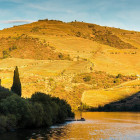Think wine, think France, Italy, Spain… the usual suspects. But countries in every corner of the world make wine – some for thousands of years, and many exceptionally well. Truly, wine is a global affair, which is why in honour of Global Drink Wine Day we’re highlighting some of the more unusual, lesser-known wine-producing regions that you really should have on your radar.
Ethiopia
Famous for its coffee, Ethiopia is now demonstrating what it can do with wine. Vines have been growing on this ancient land for hundreds of years, with Italian and Greek families helping the country to modernise its wine production in the 1940s. The country’s fruity, easy-drinking wines have caught the attention of some big names, too, with major investment from the likes of Bob Geldof and French drinks giant Castel, which has begun making wine with vines bought from Bordeaux.
India
India’s wine sector was originally established in the late 1990s, making it one of the younger wine-producing regions in the world. However, its handful of dedicated winemakers have impressed experts. Sula Vineyards – India’s biggest wine producer – entered a partnership with Marks & Spencer in 2014, making a range of wines designed to complement Indian dishes and flavours. The ‘Jewel of Nasik’ range includes a Sauvignon Blanc, Zinfandel rise and Tempranillo-Shiraz. Other critic favourites include Fratelli and Grover Zampa Vineyard.
Thailand
Wine isn’t historically a part of Thai culture, but the kingdom has been making strides in the area since the early 1990s. Falling under the label ‘new latitude wines’, Thailand’s wines largely hail from the country’s more mountainous areas, such as Phichit Province and Khao Yai. Many wineries have hired specialists and technicians from more famous wine-producing regions, and the arrival of this expertise has helped to drive a unique and burgeoning wine tourism industry. Siam Winery’s award-winning Monsoon range is of particular note.
Georgia
Georgia is one of the oldest winemaking regions in the world, dating back to 6,000 BC, although few would instinctively associate the country with wine. Its mild climate makes it ideal for grape growing – indeed, Georgia is home to more than 500 grape varieties. Indigenous wines tend to be on the sweeter side, with grapes fermented in clay jars called qvervri (pictured), rather than wooden barrels. One especially well-regarded winemaker – Pheasant’s Tears Winery – is situated in the prominent wine region of Kakheti, in the picturesque hilltop town of Sighnaghi, and makes wines in the authentic Georgian manner.
Croatia
Situated on the Adriatic Sea, Croatia is home to a diverse range of microclimates, allowing the country to support a wide variety of grapes. Croatia predominantly produces white wines, with the Zlahtina grape native to the country and grown hardly anywhere else – this light white pairs very well with seafood, a testament to the old adage ‘What grows together goes together’. Red wines are not entirely overlooked, though – the berry-centric Plavac Mali is particularly popular with locals.
Sweden
A changing climate means that Sweden – like England and Wales – has unexpectedly found itself home to increasingly optimal wine-growing conditions. The industry is still very much in its infancy – the country produced less than 450,000 litres of wine in 2019 (a drop in the ocean compared to France’s 4.5 billion) – but Sweden’s 50-odd commercial vineyards are piquing global interest, particularly as climate change poses an increasing threat to the traditional winemaking regions of southern Europe. Offerings from Hällåkra Winery and the Klagshamm vineyard are well worth exploring.






